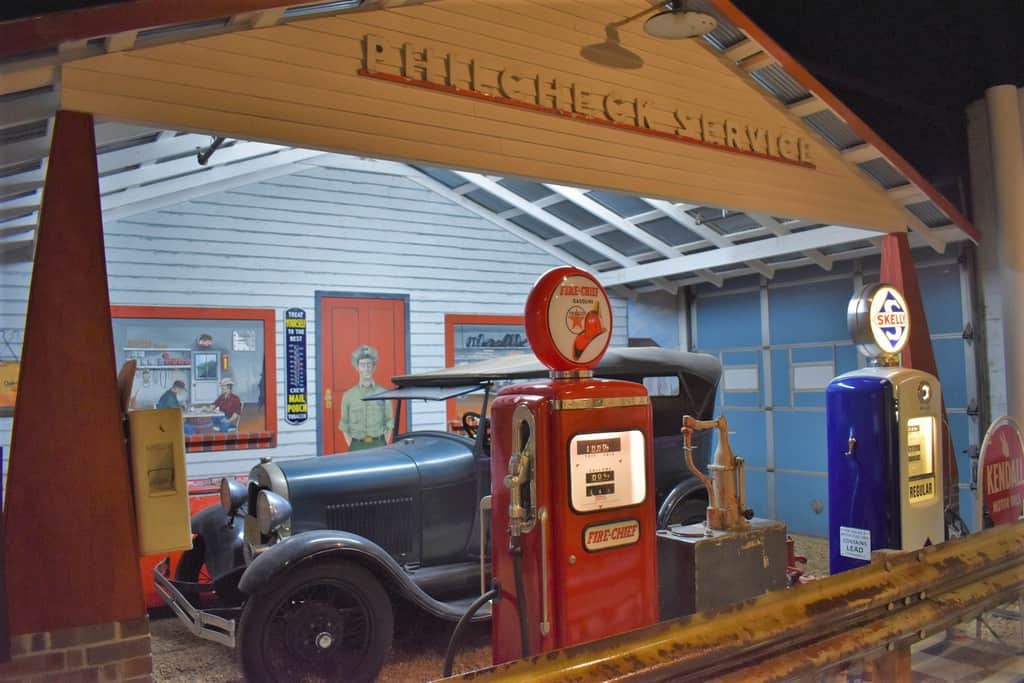Few highways have captured the American spirit like Route 66. This nostalgic thoroughfare has been dubbed “The Mother Road” and “Main Street of America”. With 2,448 miles of open road, it led travelers from Chicago to Los Angeles. Along the way, drivers would find iconic stops to satisfy just about every need. This famous path has become immortalized in movies, books, and a number of memorials. Just about every city and town along the way has looked for a way to embrace its drawing power. For those carving out the road in sections, you will likely find at least one Route 66 museum during your trip.

Perspectives from the Road
We have memories of traveling the route since our childhoods. For me, it was large portions of time spent in southern Missouri and Kansas, as well as the eastern half of Oklahoma. Many of the sites that dotted the roadside were already well-established, but this had not always been the case. Route 66 was established in 1926, and became the nation’s first all-weather highway. While it may not have been the longest or oldest American highway, it provided the shortest path between the Midwest and West Coast. To understand the significance of this highway, we need to better grasp life in this period of the country. A stop at the Route 66 Museum in Lebanon, Missouri was another chance to piece together the history of this road.

The Early Days
America was quickly changing and the country needed roads to manage these changes. The heavy agriculture base of the central states had to rely on the railroad for transportation, but rail paths were limited. The addition of highways, like Route 66, would provide pathways to places not serviced by rail. By the time I would travel the road, it was all paved, but I can imagine the earliest days. From my times in the country, I know what the weather can do to a dirt road. Imagine heading out on a cross-country journey not knowing what road conditions you would encounter.

Rough Roads
Trips like that would be more like adventures. Packing the car would require creating a second home. After all, the construction of restaurants, motels, and shops would come later. When your day ended in a city or town, these conveniences could often be found. Often times, the path between towns would be the resting stop for meals or even nighttime lodging. Talk about your old-school camping trips. The rough roadways would also present the possibility of damages to your vehicle, so plenty of spare parts should be included during packing. This display case at the Route 66 Museum reminds us of the struggles that faced many of those early day road warriors.

Adding Convenience
As more and more travelers paved the way, it brought with it people looking to capitalize off of the route. Motor lodges, now called motels, sprang up all along Route 66. These offered an easy overnight stay that got travelers out of a tent and into a bed. Over time, more amenities were added to entice travelers to stop. The addition of glowing neon signs would beckon weary drivers to pull off for the night. While many of these iconic stops have gone by the wayside, there are still plenty around. Part of the fun of a Route 66 road trip is picking a couple of these stops for an overnight stay. It offers us travelers a chance to merge with the history of the Mother Road.

Filling a Need
By the late 1930s, Route 66 had rivaled the railroad for the transportation of goods. Truckers began traveling the road in droves, which signaled the need for more amenities. Roadside cafes and diners popped up all along the path. During our explorations, we have sampled a few of the most iconic restaurants. In Springfield, Illinois, we discovered the self-proclaimed corndog origin at Cozy Dogs. Another Route 66 trip landed us at The Big Texan, in Amarillo, where we were tempted to challenge a Texas-sized steak dinner. We are betting that many of these early eateries probably used their own gimmicks to draw in diners.

A Touch of Home
Besides seeing all of the memories of yesteryear, places like the Route 66 Museum are also informative. The Kansas portion of the Mother Road is the smallest of any state. Since my childhood summers were spent in that region, I have traveled every inch of it. In fact, we were lucky enough to visit it again during an event hosted by Kansas Tourism. The fact that mining was the base of the economy for generations is well-known in that region. What we didn’t realize is that traffic along Route 66 had been shut down due to labor disputes. Obviously, it was well before our time.

America’s Main Street
Many remember the catchphrase “Get your kicks on Route 66”. Advertising, like the poster above, was used to draw attention to a large number of attractions and sights along Route 66. Cities and towns vied for tourism dollars from travelers passing east or west. These days, people from around the globe plan out their visits based on some of these same sites. While many will digest the entire route in one trip, we rely on breaking it into digestible sections. By focusing on specific cities or legs of the road, we can explore in greater detail. So far, we have successfully navigated from Chicago to Amarillo.

Route 66 Museum in Lebanon
Places like the Route 66 Museum in Lebanon serve as depositories for the memories of times gone by. They also help educate the next generation about the value of a classic American road trip. Whether you are planning your own excursion along Route 66 or any of the other great American highways, be sure to keep the spirit of those early travelers in mind. Be prepared for the unexpected and save some time for exploring the stops that aren’t always found on maps. It’s a good way to get to know the locals and make some amazing memories at the same time.






What a cool museum to explore and enjoy all the different facets of this historic road and its development. I definitely would love to visit it some day.
It’s such an amazing route and tied to so many historic events.
Then the Kansas piece may be the most nostalgic of all, being left out of the take-over! But what I would like to say is that the look and feel of your blog have become outstanding, together with your excellent photos and writing!
Thank you very much, Carol. We are so honored to hear these compliments from such an accomplished author.
Such a fascinating museum. I could swear that someone in our family on the Canadian prairies had a bedspread just like that pink one and a similar throw rug! What great road trip memories!
It’s funny how many times we see familiar artifacts during our journeys.
How fascinating to be able to travel in the footsteps of travellers from past times. And that museum really seems to show what life was like in the old days.
This type of education helps to make our journeys more interesting.